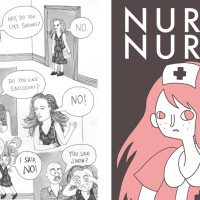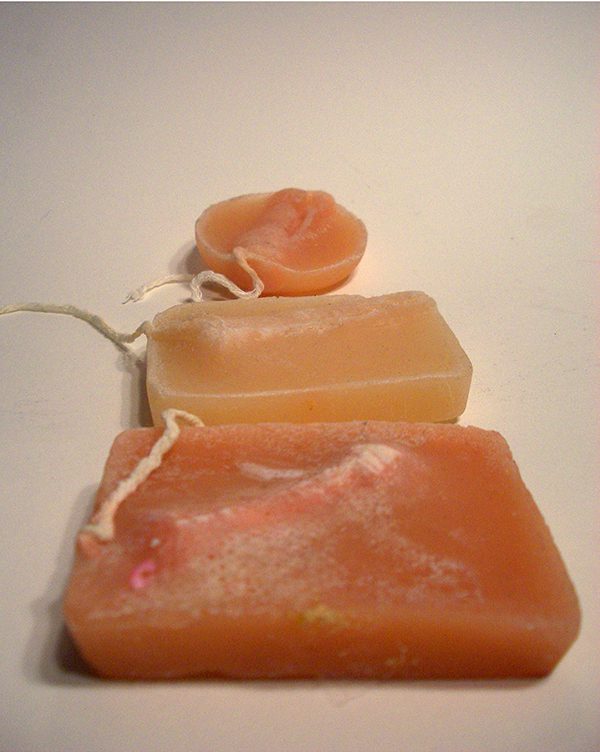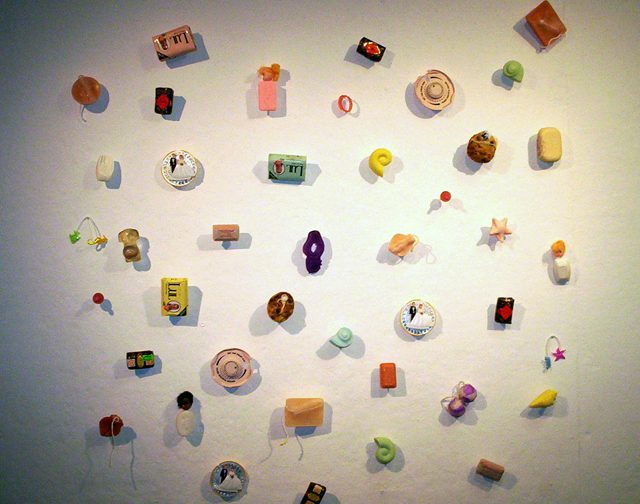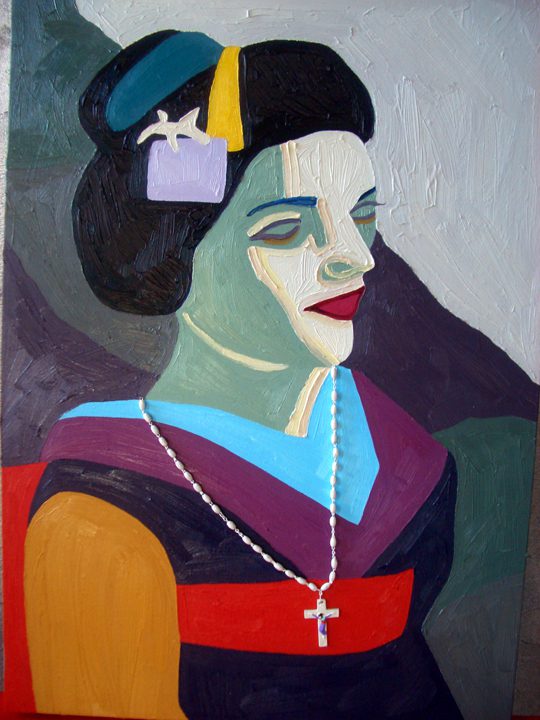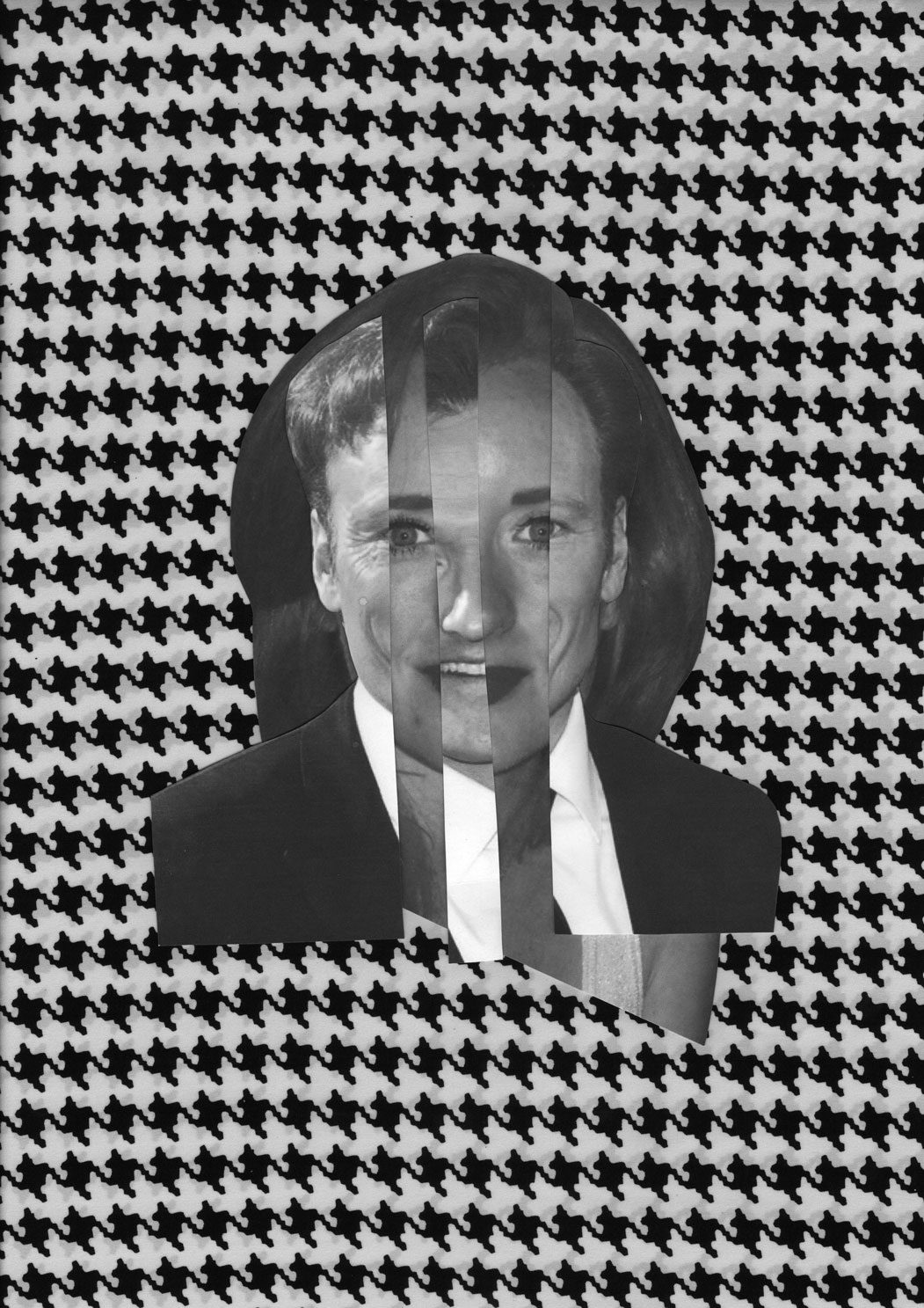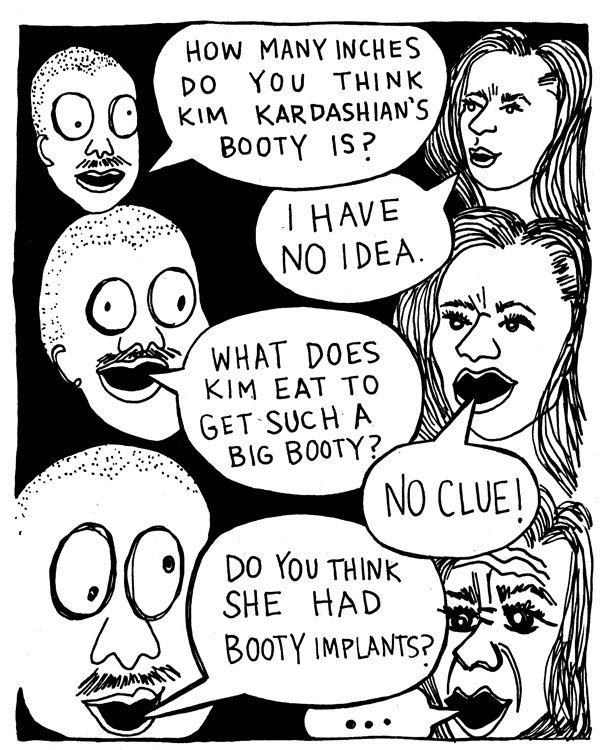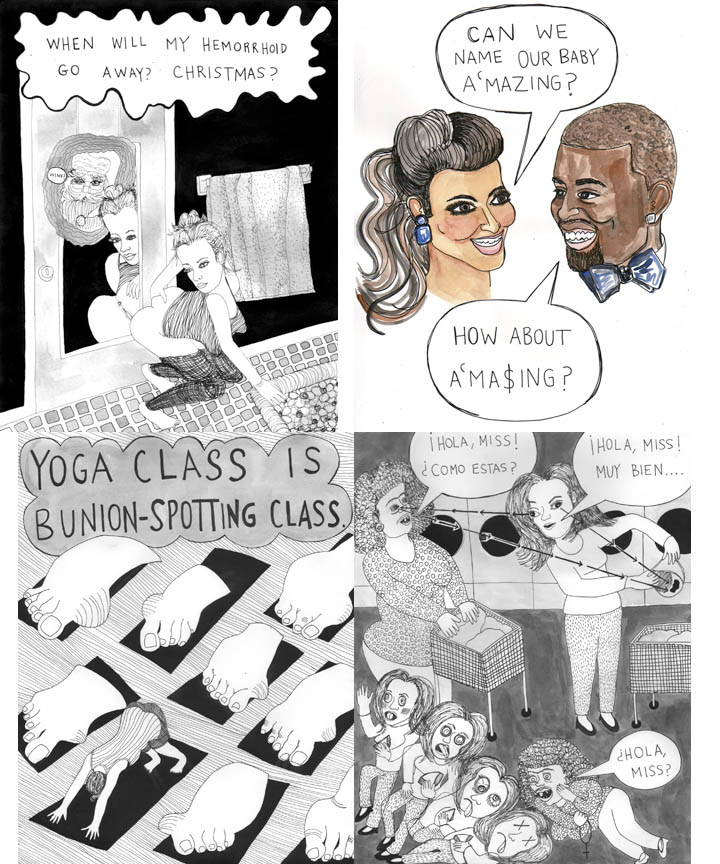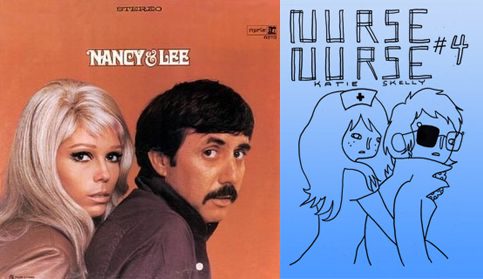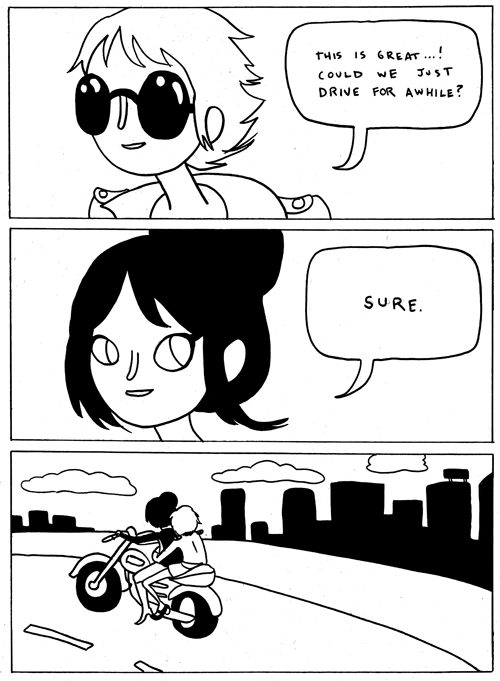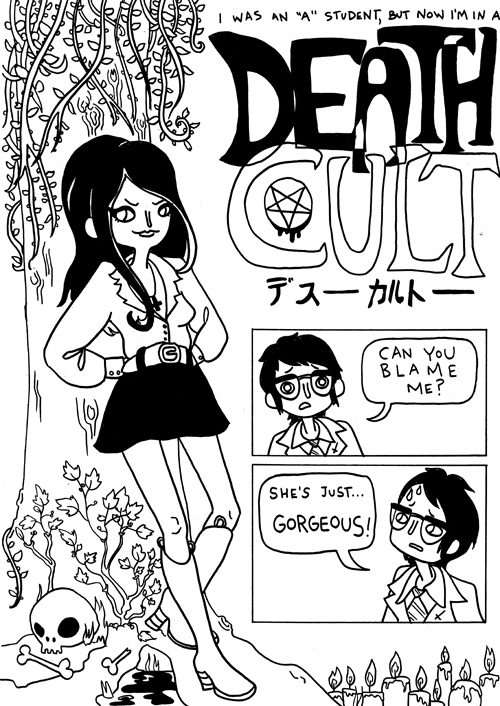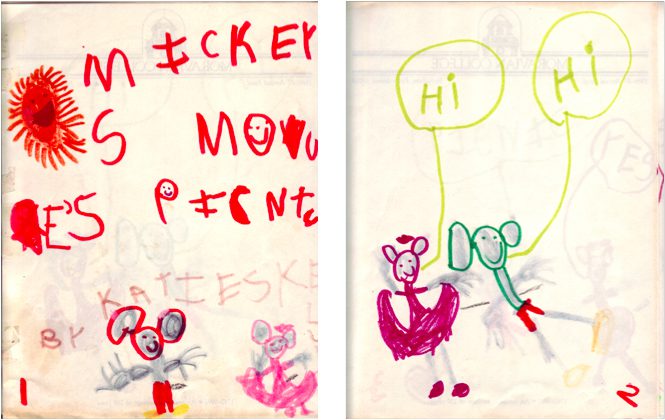The New York Comics & Picture-Story Symposium is a weekly forum for discussing the tradition and future of text/image work. Open to the public, it meets Monday nights 7-9pm EST in New York City.
Presentations vary weekly and include everything from historical topics and technical demonstrations to creators presenting their work.Check out upcoming meetings here.
The cartoonists Meghan Turbitt and Katie Skelly presented at this past week’s symposium. Both artists traced their progression and artistic influences from childhood, adolescence, and beyond. They shared their philosophies on making comics and what brought them to where they are now in their creative pursuits. They also read selections from their recent work.
Speaking first was Meghan Turbitt. She began her talk by discussing growing up in a very blue-collar Irish Catholic community in Rhode Island and the tone of the humor that brought her family together (“lots of fart jokes, lots of sex jokes”) and how that influenced her perverse sense of humor. Turbitt also explained how the various hang-ups and boundary issues that come with being raised Catholic influenced her art.
Although she was always drawing as a child, she never considered herself any good and stopped drawing in adolescence. Yet she remained a creative student: “I would wear costumes to school. I was THAT kid.”
She did take her school’s AP art class when invited, but in a classic move of subterfuge she refused to take the exam at the end of the year. This fear of committing to being an art student dissolved later when she applied to the New England School of Art and Design at Suffolk University, even though she lacked an art portfolio. Turbitt presented slides from her art school work, the vast majority of which had Catholic, feminist, and sexual overtones. Her paintings are filled with images of the Eucharist and her sculptures are composed of vibrators, tampons and rosaries.
Sculptural wall pieces, as in this photo, bring together Catholic symbolism, sex, references to cleanliness and guilt, as well as an unabashed worship of Pop Culture that predominate in her work. Whereas she didn’t read many comics growing up, she adored and absorbed countless hours of Saturday morning cartoons. It shows.
On the lighter side of her influences was a growing obsession with Howard Stern, who, as Meghan pointed out, has many devoted fans in the comics scene. She has listened to every episode of the show since 2002 and partially credits him with encouraging her uncensored and expressive attitude.
In 2005, Turbitt moved to New York and took up residence with an older French painter named Henri Chariot, who supported her painting. Her love of fashion photography and growing obsession with Geishas began to come into play in the paintings she made during this time. It was a fixation borne from a sheltered childhood, where now in adulthood the Geisha represented the thing furthest from her upbringing.
After TAing at the 92nd Street Y for artists such as Rick Diaz, Rick Bleier, and Lauren Weinstein, she heeded Lauren’s advice and took a comics class. The result was her very first comic, Lady Turbo, which already reveals many elements that would come to define “her reality,” as she calls it.
Weinstein’s class was the push Turbitt needed to throw herself entirely into making comics. She began reading comics constantly, falling in love with the Hernandez brothers and Ode to Kirihito the Buddha series by Tezuka.
Her next comic, Lady Turbo and the Terrible Cox Sucker, is a perfect storm of Catholic satire, pop culture worship, geisha obsession, and fantasy infused pseudo auto/bio comics.
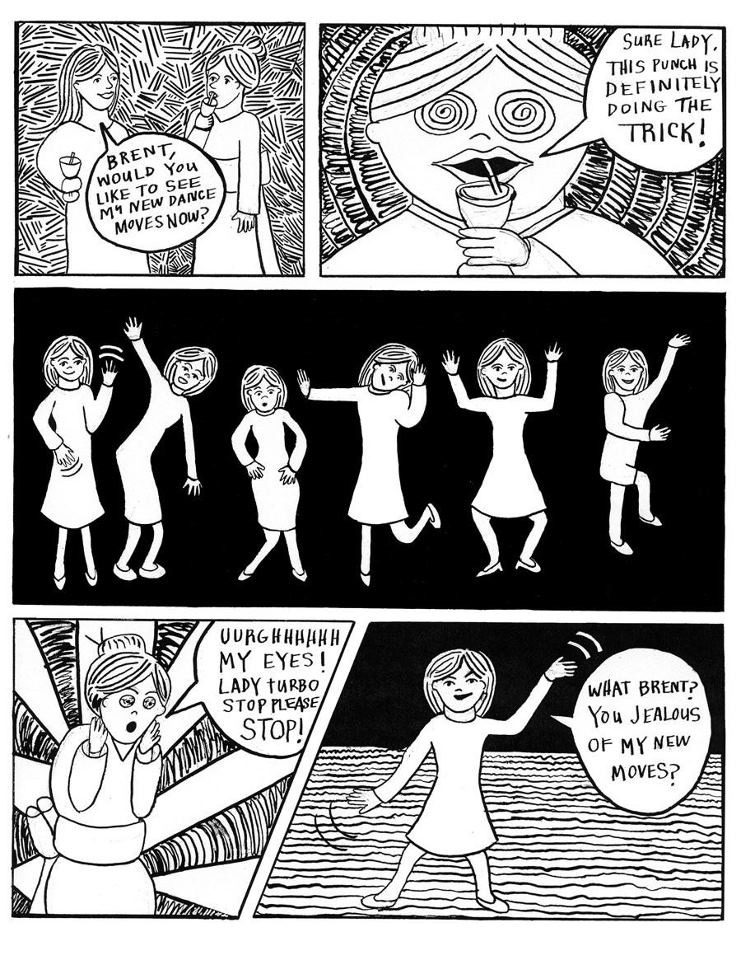 She also shared pages from her subsequent comics, Todd and Conan. She prefaced her reading of Conan, which features some pretty explicit sex, by explaining that she wants to “make people react, blush … and laugh.
She also shared pages from her subsequent comics, Todd and Conan. She prefaced her reading of Conan, which features some pretty explicit sex, by explaining that she wants to “make people react, blush … and laugh.
Meghan continued her talk by discussing the joys of connecting with fellow artists on Twitter (artists such as Ariel Schrag, Gabrielle Bell, and Katie Skelly) and how those connections have opened up platforms for her work, including Skelly’s anthology Out the Window, for which she made her Kim Kardashian comic.
Next she showed slides from her one page gag comics, which, inspired by Gabrielle Bell’s July Comics she drew every day for a month. They bear what have now become Turbitt’s trademarks: graphic content, strong pattern work, and unexpected, often unsettling humor.
Meghan concluded her talk with some touching thoughts on how much she has loved becoming part of the comics community and discovering the joys and possibilities of this medium.
***
KATIE SKELLY
Katie Skelly started off by explaining her motto “comics should blow your mind”; they should be fun and amazing and that is how she has always felt about it.

Skelly began making comics after graduating from Syracuse College, where she was NOT an art student but an Art History major. The summer following graduation she decided to do what she had always wanted to do and started drawing Nurse Nurse, a series that she succinctly described as “a psychedelic comic about nurses in space”.
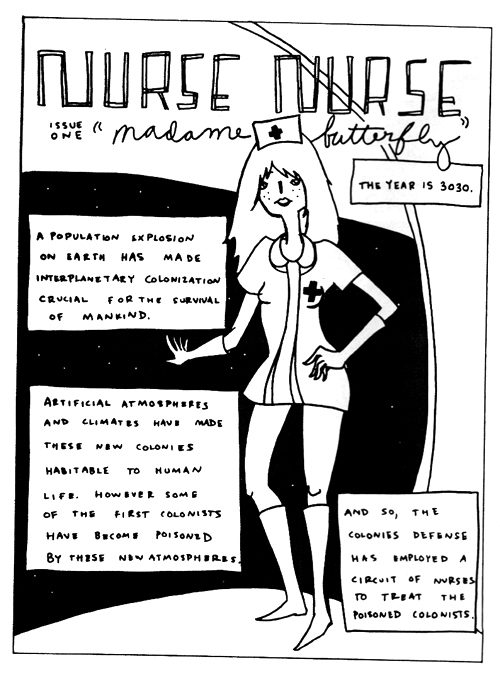 She made seven Nurse Nurse mini-comics between 2007-2011. The blog Size Matters reviewed the first two issues, which brought her to the attention of Dylan Williams, founder of Sparkplug comics. Sparkplug became her distributor and eventually her publisher when the series was collected in 2012.
She made seven Nurse Nurse mini-comics between 2007-2011. The blog Size Matters reviewed the first two issues, which brought her to the attention of Dylan Williams, founder of Sparkplug comics. Sparkplug became her distributor and eventually her publisher when the series was collected in 2012.
Skelly discussed her influences, including the Manga artist Leiji Matsumoto and the performance artist Yayoi Kusama. She admires Matsumoto’s fluidly elongated figures and treatment of hair, and in Kusama’s case, Skelly appreciates an artist who “embraces insanity” and the ability to create distinctive environments. Skelly has a strong preference for alien spaces and specifically loves Kusama’s use of dots to create depth and space as well as her heavy use of phallic shapes and insects. She presented some pages from Nurse Nurse that embody her love of Kusama and comics.
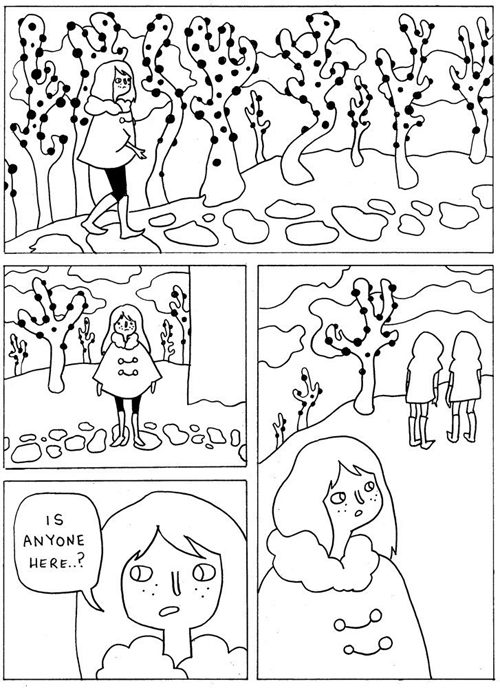
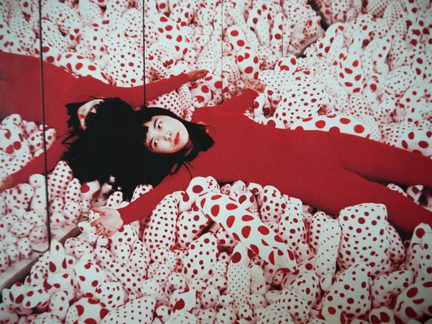
Like Turbitt, Skelly took a lot away from her younger encounters with cartoons. Cartoon Network used to import a lot of random anime including Science Ninja Team Gatchaman, which followed the adventures of bird-themed super heroes. Skelly was drawn to their more-dorky-than-menacing costumes. One episode in particular left an impression when, in an otherwise mild mannered show the character Jun, the swan based hero, is swallowed whole by a giant flower and still trapped in its acidic innards by the episode’s conclusion. It left Skelly with the bizarre and terrible feeling of “seeing something you maybe were not supposed to see.” Unbeknownst to the adolescent Skelly, it was a two part episode, but that feeling stayed with her, that something sweet could turn disturbing, and it is a feeling she has attempted to elicit with her own work.
Skelly used the phrase “silly science-fiction” to explain how she feels about the comic and movie Barbarella, where many basic science fiction tropes are dropped. Additionally, the aesthetic of the Jean Luc Forest’s comic art has helped inform her economical use of line and gesture as well.
Next she shared her process of sketching, inking, and then adding elements, like stars, later in Photoshop. She shared slides of imagery that inspired her compositions. For example, the cover of Nurse Nurse #4 was directly inspired by record cover of the Lee Hazelwood and Nancy Sinatra album, ‘Nancy and Lee.’ Skelly lists Lee Hazelwood as one of her not-so-secret obsessions.
Skelly read pages from Nurse Nurse and her new project Operation Margarine due out from AdHouse Books Spring 2014. She pointed out that she currently has a rule of keeping dialogue on any given page to 20 words or under. She is proud of the fact that due to the research she has done for Operation Margarine she can now draw all sorts of different motorcycles for her new book: “There’s something about being cool on a motorcycle that’s so intoxicating.”
She also cited the fashion designer Rudi Gernreich as a major influence, both for his classic ‘60s aesthetic and specifically for his infamous “monokini.” Gernreich, along with Kusama and even Harvey Comics’s Little Dot all play into Skelly’s fascination with and heavy use of dots in her work. Skelly enthusiastically revealed numerous more influences including the Richard Prince nurse paintings, Louis Vuitton ad campaigns, Faster Pussycat Kill Kill, and Jean Luc Godard’s The Weekend: “I love the senseless violence of that movie.”
To conclude her talk Skelly looped back to her childhood and told the audience about how her father owned a newsstand and would bring her home piles of extra comics, which she read excessively. She then shared pages from what could be considered her very first comic ever, written at age 5 or 6 called Mickey Mouse’s Picnic. As she pointed out she kept dialogue to a minimum even then.
***
Image 1: Meghan Turbitt, Tampon Soap, 2004
Image 2: Meghan Turbitt, 5 Were There, 2004
Image 3: Meghan Turbitt, Geisha, 2005
Image 4: Meghan Turbitt, Lady Turbo and the Terrible Cox Sucker, 2010
Image 5: Meghan Turbitt, Conan, 2011
Image 6: Meghan Turbitt, Kim Kardashian, 2013
Image 7: Meghan Turbitt, Various Gags, 2012
Image 8: Comics Blow Your Mind, Katie Skelly, 2011
Image 9: Katie Skelly, Nurse Nurse #1, 2007
Image 10: Katie Skelly, Nurse Nurse, 2010
Image 11: Yayoi Kusama, Infinity Mirror Room, 1965
Image 11: Nancy and Lee, Reprise Records, 1968
Image 12: Katie Skelly, Nurse Nurse #4, 2011
Image 13: Katie Skelly, Operation Margarine, 2013
Image 13: Katie Skelly, Death Cult, 2012
Image 14: Katie Skelly, Mickey Mouse’s Picnic, circa 1990
***
About the author: Sophia Wiedeman is a comic artist and author of The Lettuce Girl. She lives and draws in New York city. You can visit her here.
